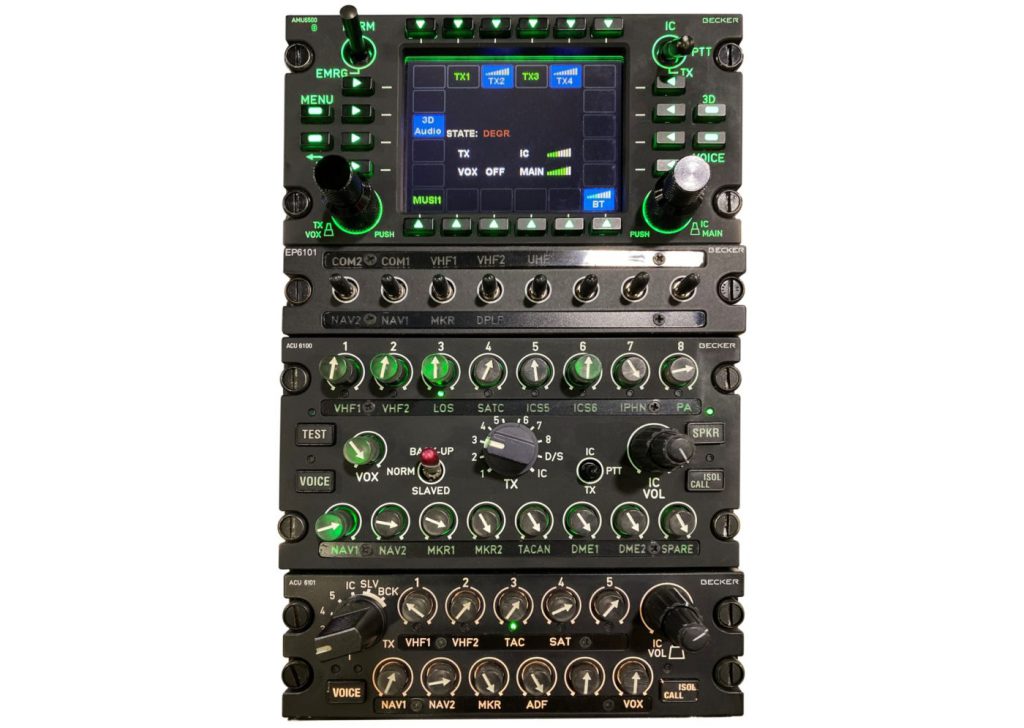
Becker Avionics has brought a new intercom system to the market that makes it easier for pilots to listen to multiple radios at once using 3D audio. The system, AMU6500, is parallel to the company’s DVCS6100 intercom system with 3D audio incorporated.
The AMU6500, which is compatible on both fixed- and rotary-wing aircraft, can operate four radios per unit; up to three AMUs can be installed in an aircraft, allowing for pilots to operate up to 12 transceivers and 12 receivers. When 3D audio is activated on the system, pilots can have multiple radios on, yet still be able to focus on one radio frequency at a time.
“The advantage of 3D audio is you can have multiple radios running and your brain will split them,” said Lee Benson, senior consultant for Becker Avionics. “If you want to listen to the left radio, you listen to the left radio and the right radio goes away, and vice versa.”
The 3D audio feature relies mainly on the human brain’s ability listen to a particular conversation in one direction, and tune out all other sounds coming from other directions. For example, on an air medical flight, the patient’s headset can be set to 12 o’clock, allowing the flight nurse sitting in front of them to listen to them more attentively. Then, if hospital calls come through at the same time, those radio frequencies will sound as though they are coming from a different direction. The flight nurse can then choose which radio they would like to focus on.
“I used to be the chief pilot for LA County Fire,” said Benson. “You’d have two or three radios running at the same time, and you’d be turning volumes up and down and shutting them off. You’re just constantly working, trying to keep up with the communications. With the AMU, you just leave all the volumes where they’re at.”
David Oglesbee of Becker said the 3D audio system takes about 30 minutes to get used to, “and you have it 100 percent figured out.” The box will have the future capability to split between the pilot and copilot, allowing each one to listen to their own radio frequencies from one unit.
The box was also designed to be tactile for pilots when in use, so they can feel the clicks of the knobs as they turn them, or the buttons as they push them. This is to ensure pilots “don’t accidentally hit buttons while flying 100 knots,” Oglesbee said.
The company believes the AMU6500 will be most beneficial for operators that need the capabilities of an intercom system, but don’t have the budget for a more expensive unit. The system will also benefit law enforcement operators and private operators of light-to-medium aircraft like the Bell 505, Oglesbee said.
The AMU6500 has been in development for roughly six years, and many agencies have now procured or are in the process of procuring the system.
The system is night vision goggle compatible out of the box, and Bluetooth compatible. “Bluetooth is important because a lot of agencies are now carrying Bluetooth-enabled headsets,” said Benson. “So, if a police officer has his own special frequency, he can tie into the [AMU] system.”
Oglesbee said the AMU6500 is priced for the market; the company wanted to keep the price of the system competitive while still offering the capabilities that operators need.
Source: Verticalmag.com